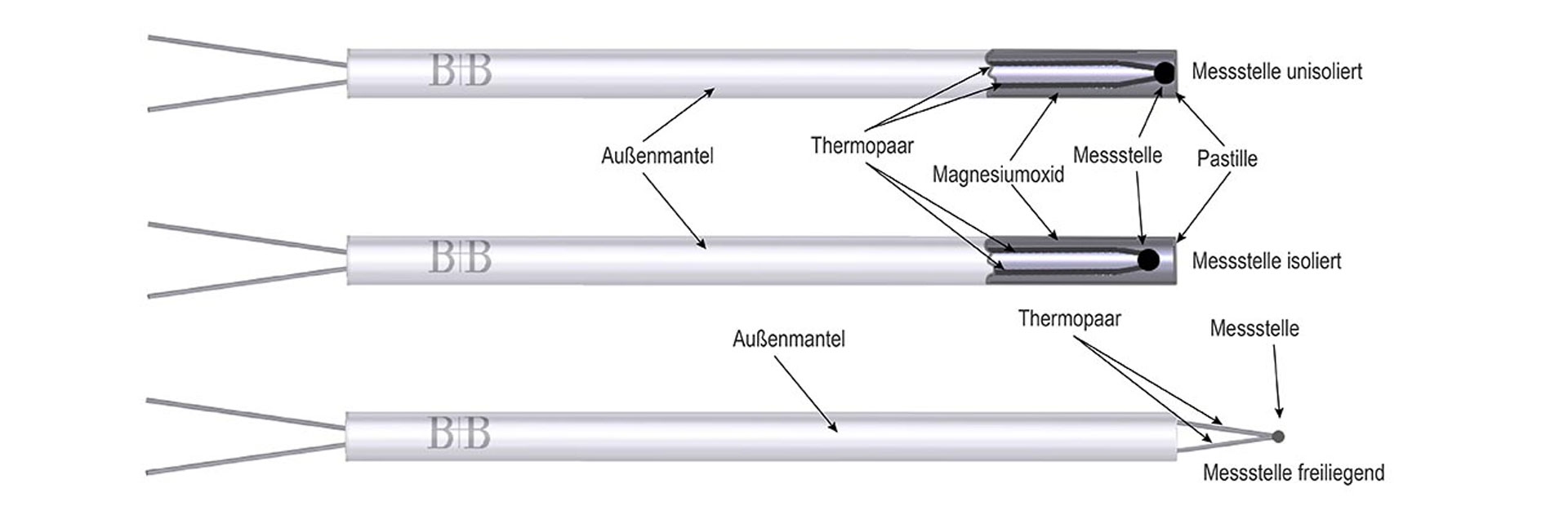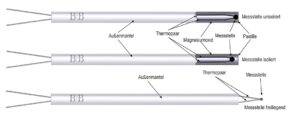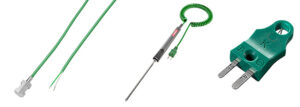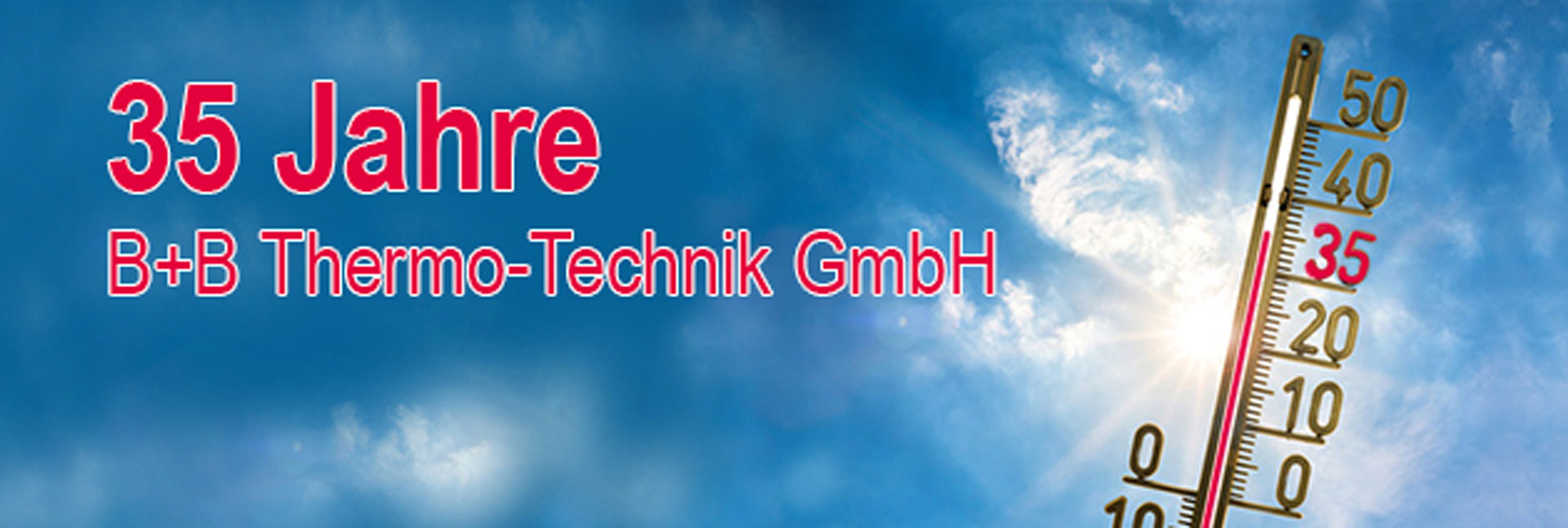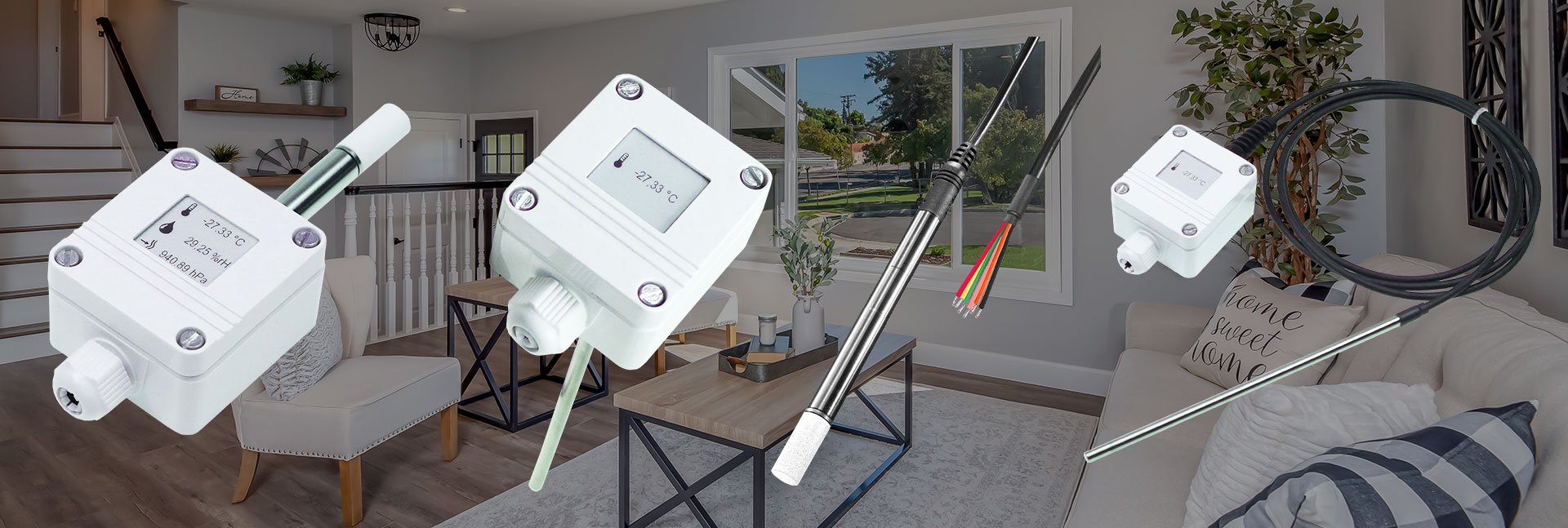Structure sheath thermocouples
In addition to the cable probes and sheath resistance thermometers already presented, there are other ways to measure the temperature in an application. However, these possibilities are based on a different measuring principle. We are talking about thermocouples. They have the great advantage that they can be used in environments up to over 1,600 °C.
Thermocouples are formed by an electrically conductive connection of two different metals (alloys). These are connected to each other at the measuring point. A temperature-dependent contact voltage is generated at the junction. The voltage (thermoelectric voltage) depends on the two alloys and the temperature difference between the junction (measuring point) and the open ends (junction). Important: ends must be continued with identical alloys (thermocouple wire) or with alloys having the same thermoelectric properties (compensating wire) as the thermocouple wires, up to a reference measuring point of known temperature. The different alloys of the wires are identified by types (see table).
| Alloy | Thermocouple type | Color | Measuring range |
| NiCr-Ni | K | Green | -200…+1200 °C |
| Fe-CuNi | J | Black | -40…+750 °C |
| Pt100Rh-Pt | S | Orange | -40…+1600 °C |
| Cu-CuNi | T | Brown | -200…+350 °C |
| NiCrSi-NiSi | N | Pink | -270…+1300 °C |
| Pt13Rh-Pt | R | Orange | -40…+1600 °C |
| NiCr-CuNi | E | Purple | -200…+900 °C |
| Fe-CuNi | L | Blue | -200…+800 °C |
Structure of a sheath thermocouple
The sheath thermocouple consists of two conductors made of thermocouple material.
These are enclosed in magnesium oxide and a stainless steel sheath (e.g. Inconel 600). In the measurement industry, this is called a sheathed measuring cable. This is shortened to the required length and the two wires are joined together (in almost all industrial applications these are welded together to withstand vibration and shock).
Then the opened part is filled up again with magnesium oxide and closed with a pastille.
Due to the magnesium oxide, the mineral-insulated thermocouples are optimally fixed and can withstand high pressures and temperatures (depending on the thermocouple type, see table) without any problems due to their structure. The robust, vibration-resistant design ensures durability. Just like the mineral-insulated thermometers, the mineral-insulated thermocouples can also be bent and thus adapted to their application environment.
A mineral-insulated thermocouple can be constructed in three different variants. For very fast response times, an exposed or perforated measuring point is suitable. If a pressure-resistant, corrosion-resistant design is required that can also withstand mechanical influences, an uninsulated design is advantageous. Another variant is to fill magnesium oxide as an insulating material between the measuring point and the sleeve wall. This is known as an insulated sheath thermocouple. This protects the MTE from electrical influences and makes it more resistant to insulation. However, the insulation also increases the response time accordingly. To counteract this, insulated mineral-insulated thermocouples with small diameters are often used in industrial applications.
Of course, different connection variants are also required depending on the application situation. The sheathed thermocouple with free ends described above can also be extended to include, for example, a silicone cable or a thermocouple connector. Furthermore, as with a sheathed resistance sensor, a thread or other fastening options can also be attached here. It is also possible to construct temperature sensors with a connection head on the basis of the thermocouple measuring principle. In addition to the pure sheath thermocouples, there is also the possibility of equipping a cable sensor with thermocouples, the so-called TE sensor.
Structure of a TE sensor (thermocouple sensor)
A TE sensor is constructed by means of a thermocouple cable or stranded wires. These are connected to each other at the measuring point, whereby the same measuring principle is achieved as with the sheathed thermocouple. The sensor can be constructed according to countless variants. The most common variants are, among others, the air sensor with exposed or perforated measuring tip, the surface sensor in its different variants, and the pipe contact sensor. It is also possible to construct the PD sensor similar to a cable sensor: TE cable, protective sleeve and possibly potting compound, as well as further components to increase the insulation resistance or the response time.
The difference between the TE sensor and the cable sensor is the measuring principle used. Instead of a platinum sensor, for example, the TE sensor uses thermocouple wires. As with the sheathed thermocouple, the two conductors are connected together at the tips and then inserted into the sleeve. If desired, the sleeve can be potted and filled with thermal paste. The connected cable must be compatible with the measuring principle and therefore made of thermocouple material. Alternatively, a compensating cable can be connected, which does not have the identical alloys as thermocouple material, but has the same thermoelectric properties. This makes the compensating cable significantly less expensive, but also less accurate than the thermocouple cable.
Other interesting topics
Newsletter registration
Stay up to date with us free of charge. Don't miss any more news, novelties or information with our free newsletter!

